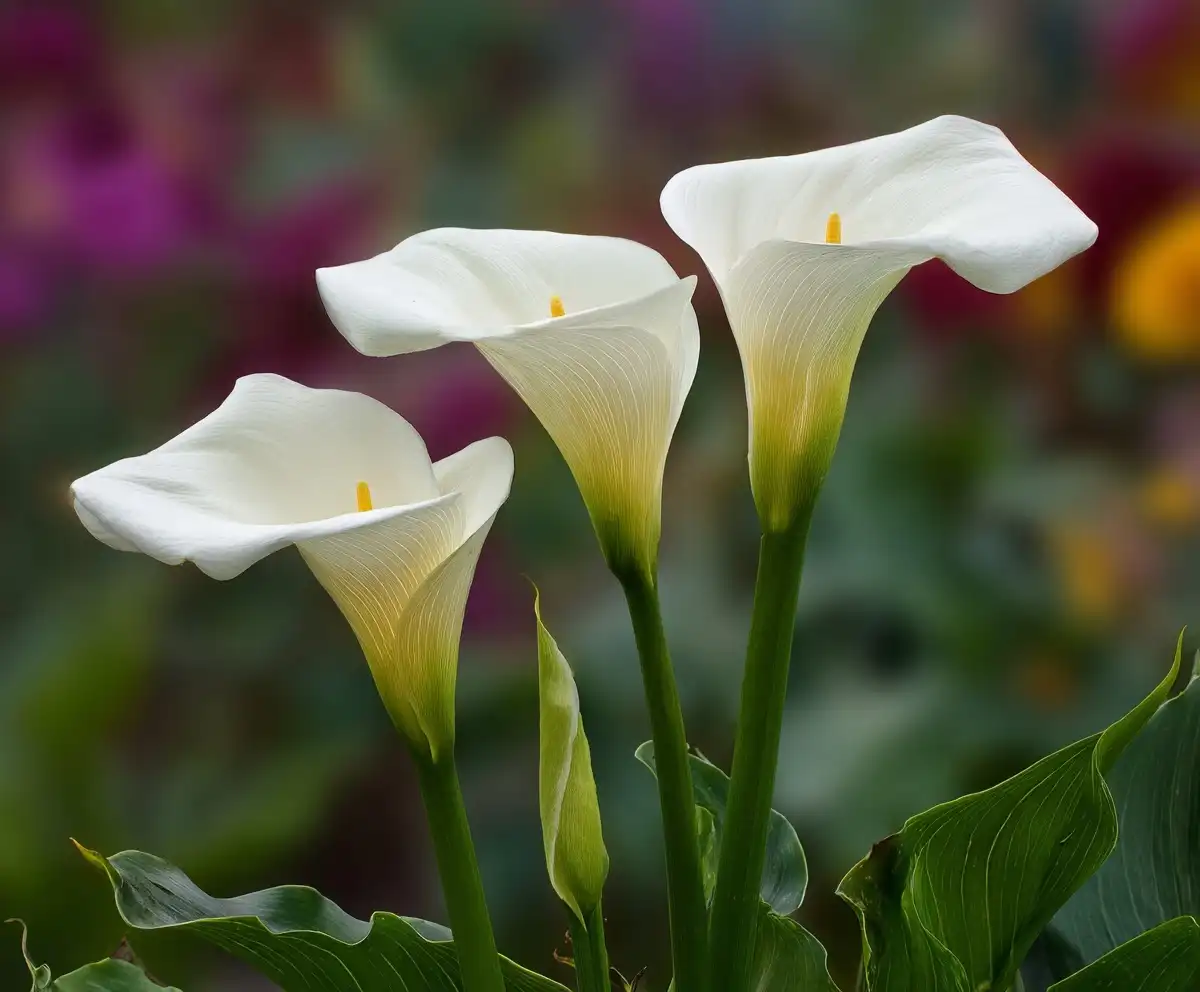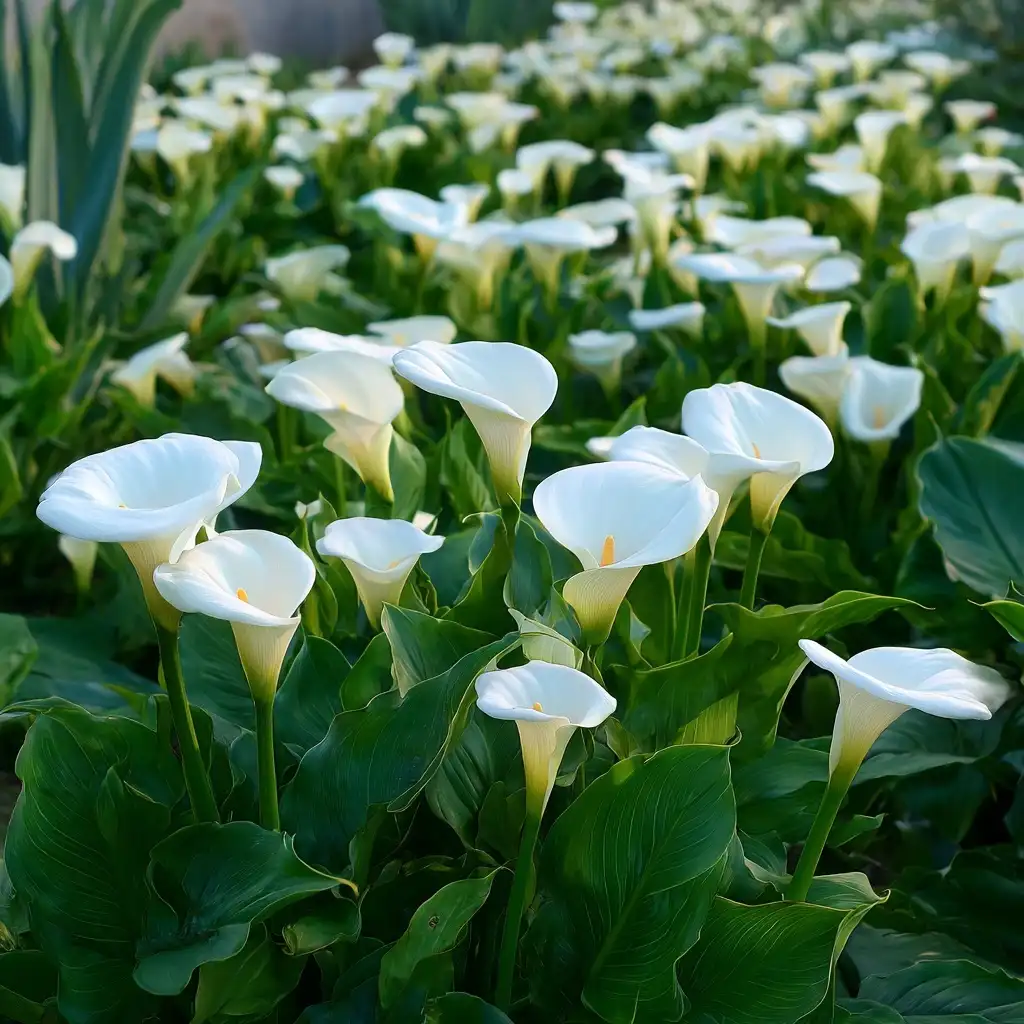Calla lily plant care is easy once you know what these elegant flowers need. With their trumpet-shaped blooms and rich green foliage, they add charm to both indoor pots and sunny garden beds. Calla lilies thrive with the right balance of light, moisture, and soil.
Whether you’re planting them in containers or in a garden bed, this guide will show you how to grow healthy calla lilies year-round.
Table of Contents
🌿 Calla Lily Plant Care Tips
Calla lilies are surprisingly low-maintenance, but they do have some specific preferences that make a big difference in their growth and flowering success. Below are the key areas you’ll want to get right when caring for these graceful plants.
🌱 Plant Size
Mature calla lilies typically reach between 24 to 36 inches in height, with some varieties remaining a bit more compact. The flower stalks usually rise slightly above the foliage, creating a layered look. In terms of spread, they can grow 18 to 24 inches wide, making them ideal for borders or as centerpieces in containers.
Tip: When planting in groups, allow at least a foot of space between bulbs to prevent overcrowding.
☀️ Light Requirements
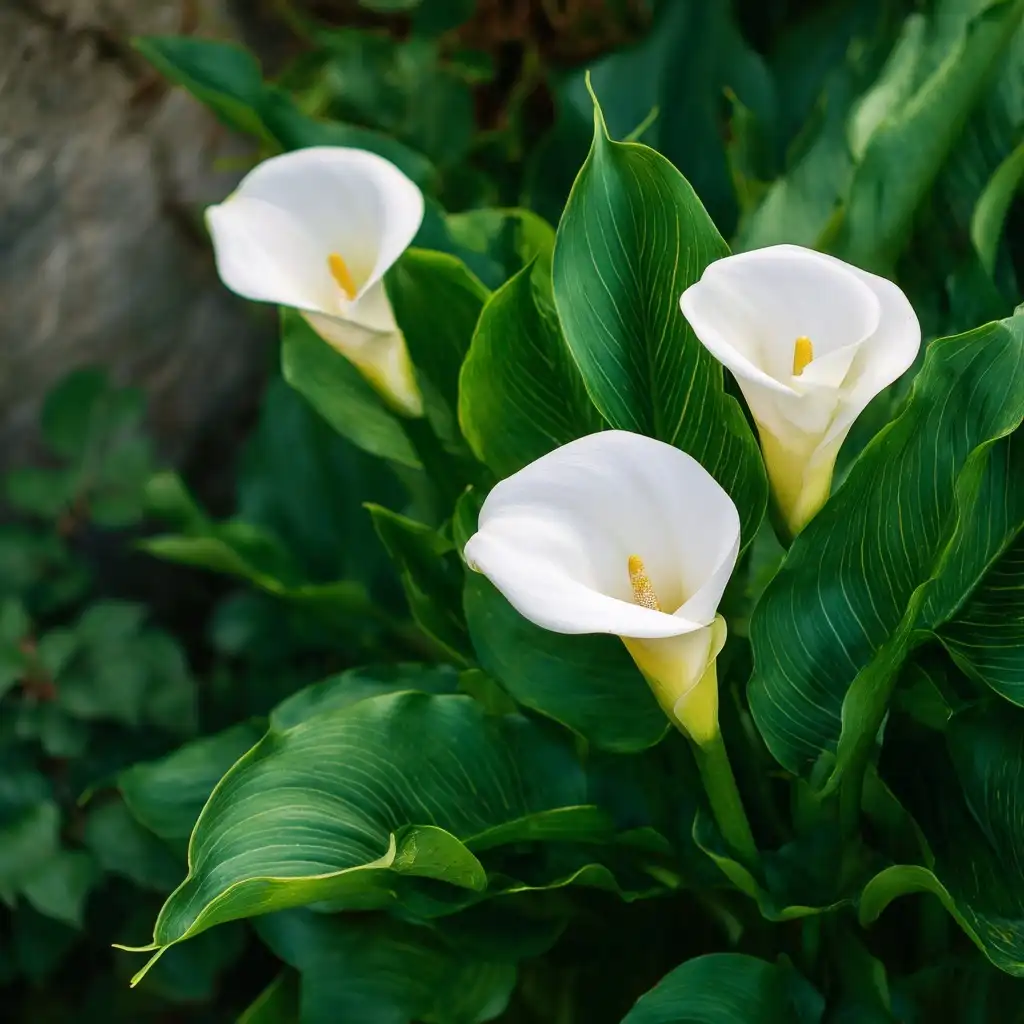
Calla lilies thrive in bright light, but the exact amount depends on where you’re growing them:
- Outdoors in warmer climates: Partial shade or dappled sun works best to prevent leaf scorch.
- In cooler zones: Full sun encourages vigorous growth and more blooms.
- Indoors: Place the plant near a window with plenty of indirect sunlight. Too much direct light can dry out the leaves or cause yellowing.
If your plant isn’t blooming, insufficient light is often the culprit.
💧 Watering (Including Temperature & Humidity)
Water is crucial in calla lily plant care, but overwatering is a common mistake.
- Keep the soil consistently moist, not soggy.
- Always use containers with drainage holes to avoid root rot.
- During active growth (spring through early fall), water 2–3 times per week or whenever the top inch of soil dries out.
- Reduce watering after blooming finishes, especially in dormant phases.
Ideal temperature: 60°F–80°F
Minimum tolerated: 55°F
Humidity: Moderate humidity levels enhance flower formation. A shallow pebble tray or occasional misting works well indoors.
🪴 Soil Type

Choose a rich, well-draining potting mix that retains some moisture but doesn’t stay wet.
Recommended soil components:
- Peat moss or coco coir (for moisture retention)
- Perlite or sand (for drainage)
- Compost or aged manure (for nutrients)
A slightly acidic to neutral pH (6.0–7.0) is perfect for optimal root health.
🌼 Fertilizing
Calla lilies benefit from a regular feeding schedule:
- Use a balanced liquid fertilizer (e.g., 10-10-10 or 20-20-20) every two weeks during the growing season.
- Stop fertilizing once the plant begins to go dormant.
- Alternatively, use a slow-release fertilizer when planting in spring.
- In garden beds, top-dress with compost in fall to refresh the soil.
Avoid high-nitrogen formulas, which can promote leafy growth at the expense of blooms.
🪴 Potting & Repotting
Calla lilies do well in pots, but space matters:
- Use a 10–12 inch wide pot for each rhizome.
- Plant the rhizomes about 3–4 inches deep, with the eye (growing tip) facing up.
- Choose a sturdy container that won’t tip as the plant matures.
Repotting Tips:
- Repot every 2–3 years or when roots become crowded.
- If growth slows or flowering stops, it’s a sign your plant may need a larger container or fresh soil.
🌱 Calla Lily Plant Propagation
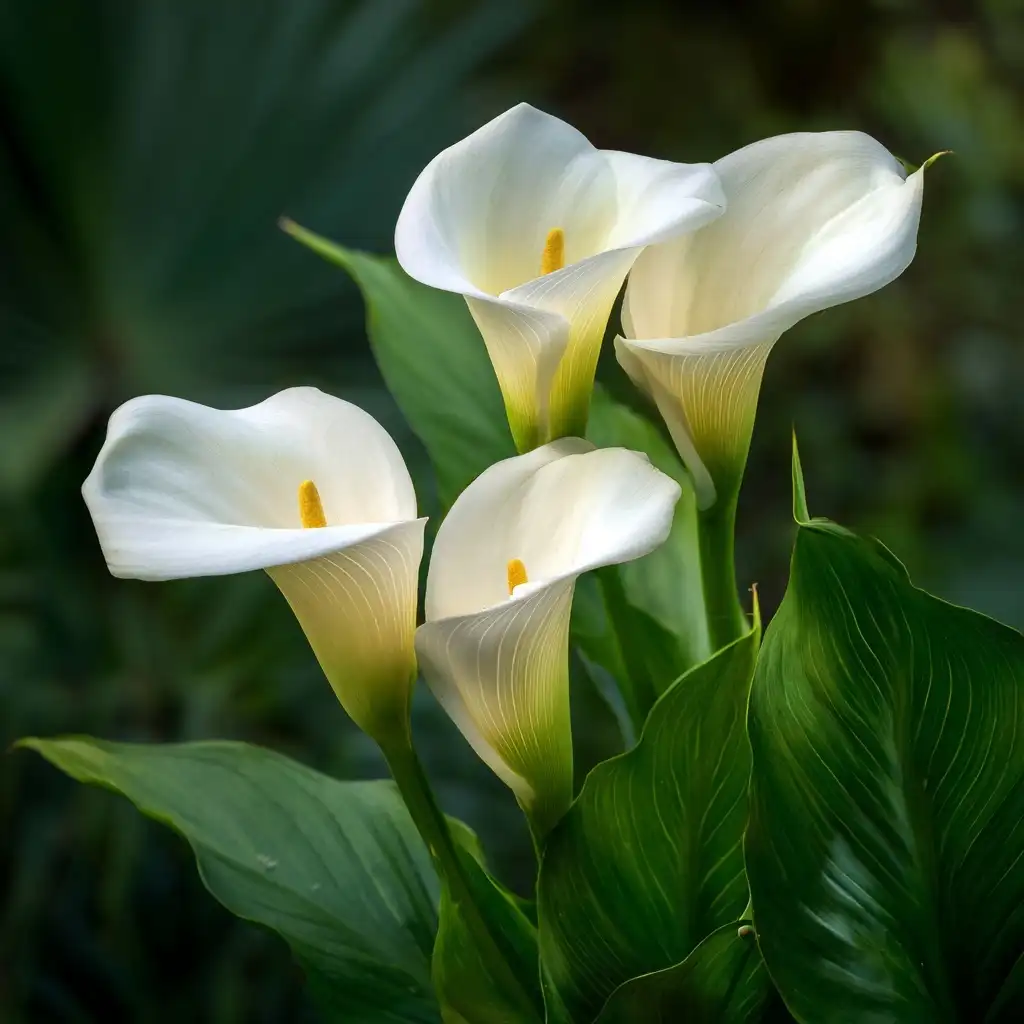
Propagating calla lilies is a simple and effective way to multiply your plants or rejuvenate older ones. The most reliable method is division of rhizomes, which ensures that the new plants will be identical to the parent.
🧑🌾 When to Propagate
The best times to divide calla lily rhizomes are:
- Early spring, just as new growth appears
- Late summer to early fall, after flowering ends and the plant begins to enter dormancy
Avoid dividing during active blooming to prevent stressing the plant.
✂️ How to Divide Rhizomes
Follow these steps to ensure healthy propagation:
- Lift the plant carefully from the soil or container.
- Gently shake off or rinse away excess soil to expose the rhizomes.
- Look for natural clumps or offshoots — these are the parts you’ll divide.
- Using a clean, sharp knife, separate the rhizomes, making sure each piece has at least one “eye” (growth point).
- Allow cut sections to dry for 24 hours to reduce the risk of rot.
- Replant rhizomes in fresh, moist soil with good drainage.
🪴 Care After Propagation
- Keep soil lightly moist until new growth appears.
- Place newly planted rhizomes in bright but indirect light.
- Avoid fertilizing until new shoots have fully developed.
With proper care, propagated calla lilies will bloom within the following growing season.
🌸 Different Types of Calla Lilies

Calla lilies aren’t just available in classic white. These plants come in a vibrant palette of colors and forms, making them a favorite for both gardens and floral arrangements. While most share similar care requirements, slight differences in size, sun tolerance, or bloom time can set them apart.
Here are some of the most popular and unique varieties to consider for your garden or indoor collection:
🔥 ‘Fire Dancer’
This bold variety features red-orange trumpet-shaped blooms and lush, green leaves often speckled with white. It’s a real standout in containers or garden beds and prefers full sun to partial shade with consistently moist soil.
🌸 ‘Pink Melody’
With its soft, rosy-pink spathes and upright, sturdy stems, ‘Pink Melody’ is a romantic option. It grows 12 to 24 inches tall and blooms from mid-summer through fall. Ideal for borders or as a cut flower.
🌞 ‘Acapulco Gold’
Brighten up your space with vivid yellow flowers from this cheerful variety. Its arrow-shaped leaves contrast beautifully against the gold blooms. Perfect for areas with full sun and rich, moist soil.
❤️ ‘California Red’
This variety lives up to its name, producing deep magenta-red blossoms that create an eye-catching display. It grows well in both containers and garden beds, especially when planted in sunny locations.
🖤 ‘Nightlife’
If you love dramatic foliage, ‘Nightlife’ delivers with its deep purple flowers and lush leaves. It’s a top pick for moon gardens or modern landscapes. Prefers partial sun and evenly moist conditions.
🤍 ‘California Ice Dancer’
This elegant cultivar produces creamy white flowers on 18-inch stalks, making it perfect for minimalist or monochrome gardens. Its leaves are slightly darker than average, providing a strong contrast.
🌸 Other Notable Varieties
- ‘Crystal Blush’: Similar to Pink Melody, but with more subtle, blush-toned flowers
- ‘NightCap’: Another dark-blooming variety, similar in tone to ‘Nightlife’ but with broader foliage
Tip: When selecting a variety, check the label for any specific light or moisture preferences, as some hybrids are more adaptable than others.
❓ Calla Lily FAQs
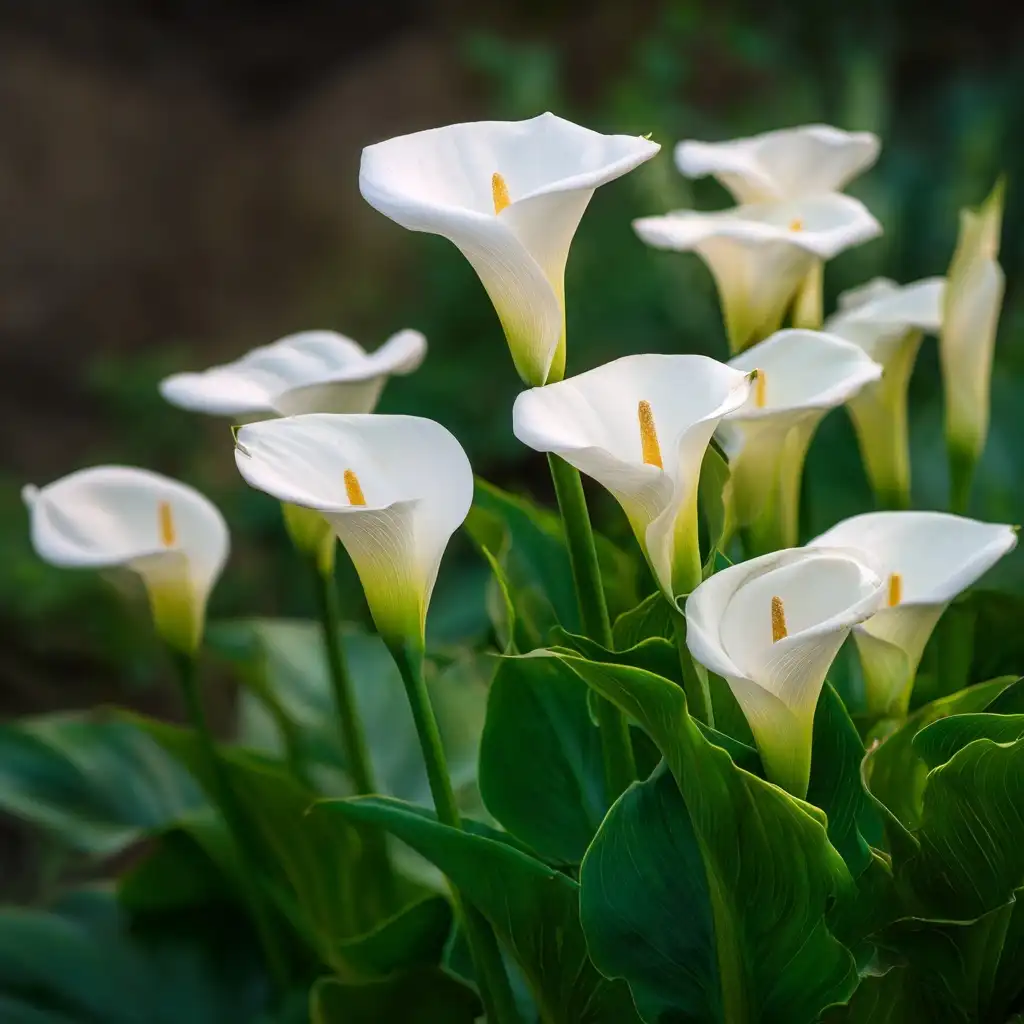
🐾 Are Calla Lilies Toxic to Pets?
Yes — all parts of the calla lily plant are toxic to pets such as cats and dogs. They contain insoluble calcium oxalates, which can cause:
- Drooling
- Vomiting
- Difficulty swallowing
- Oral irritation or swelling
Always place calla lilies out of reach of pets and children, and wear gloves when handling the plant, as the sap may cause skin irritation.
🌱 How to Plant Calla Lily Rhizomes?
For best results when planting calla lily rhizomes:
- Plant with the “eye” or bud side facing up (look for a dimple or bump)
- Set the rhizome 2–4 inches deep in loose, moist soil
- Space rhizomes 12 inches apart to prevent crowding
- Keep the soil lightly moist until you see new growth emerge
Planting incorrectly — especially upside-down — can delay sprouting or lead to poor growth.
🍂 Why Do Calla Lily Leaves Turn Yellow?
Yellowing leaves are a sign that something’s off. Common causes include:
- Overwatering, leading to root rot
- Underwatering, causing dehydration
- Poor drainage, especially in containers
- Nutrient deficiency, particularly nitrogen
- Natural dormancy, usually after blooming season
To correct the issue:
- Check moisture levels and drainage
- Use a balanced fertilizer regularly
- Trim away dead or damaged foliage to redirect energy to healthy growth
🦠 Are Calla Lilies Susceptible to Diseases or Pests?
While generally hardy, calla lilies can suffer from:
Fungal/Bacterial Issues:
- Root rot
- Crown rot
- Leaf spot
- Botrytis blight
Pest Problems:
- Aphids
- Thrips
Preventive Measures:
- Water only when the top inch of soil feels dry
- Avoid splashing water on leaves
- Keep leaves clean and remove dead foliage
- Use neem oil or copper-based fungicides as needed
Proper airflow and spacing also reduce the risk of fungal outbreaks and pest infestations.
✅ Conclusion
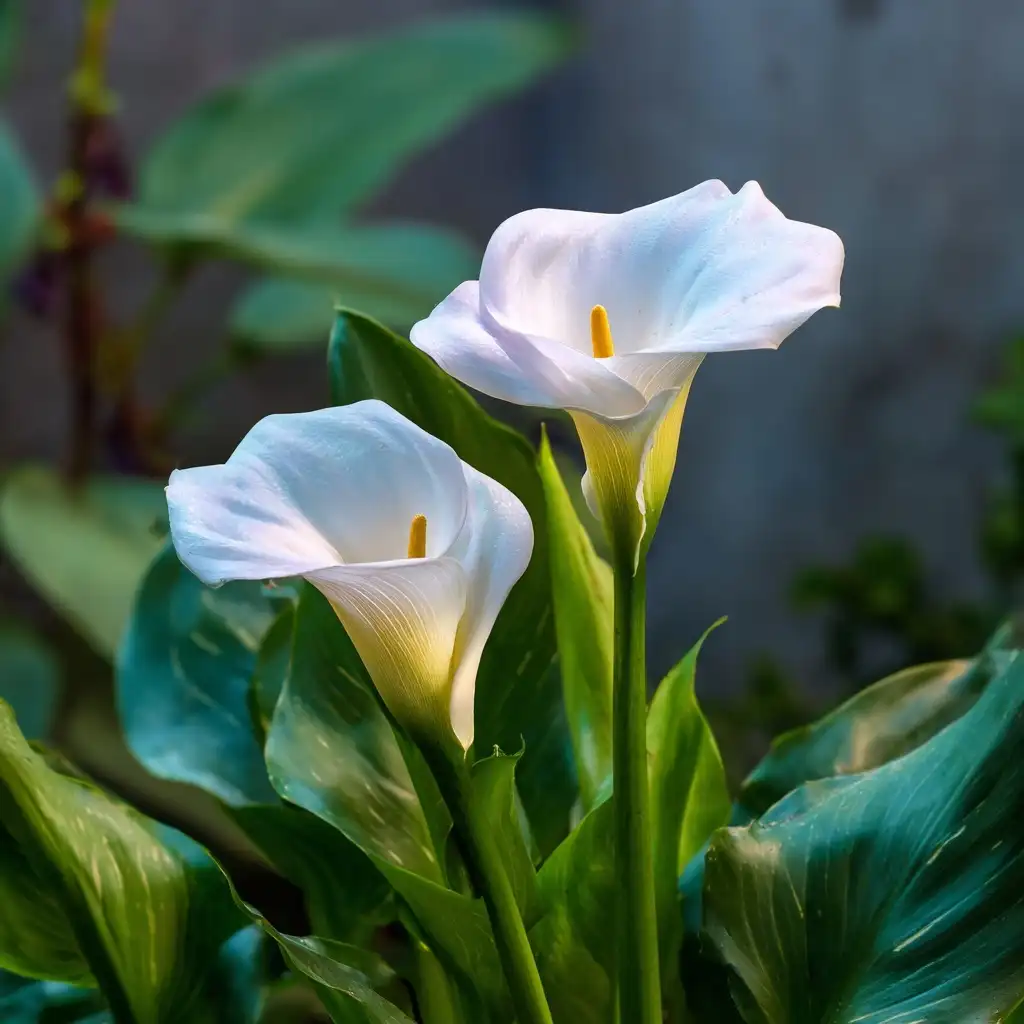
Caring for calla lilies is both rewarding and refreshingly simple once you understand their basic needs. Whether you’re growing them in a sunlit window or planting them in your garden, these elegant flowers thrive in moist, well-drained soil, ample indirect light, and just the right touch of humidity.
Once you master key essentials—like proper watering techniques, planting depth, and sunlight exposure—your calla lilies will reward you with vibrant blooms and healthy foliage year after year. These eye-catching flowers pair beautifully with other garden favorites or can even complement natural hardscaping features.
The secret? Consistency. With the right environment and a little attention, your calla lilies will flourish without fuss—adding a bold, graceful presence to your indoor or outdoor oasis.
🌿 Love gardening inspiration? Follow me on Pinterest for bold plant ideas, tips, and seasonal color!

